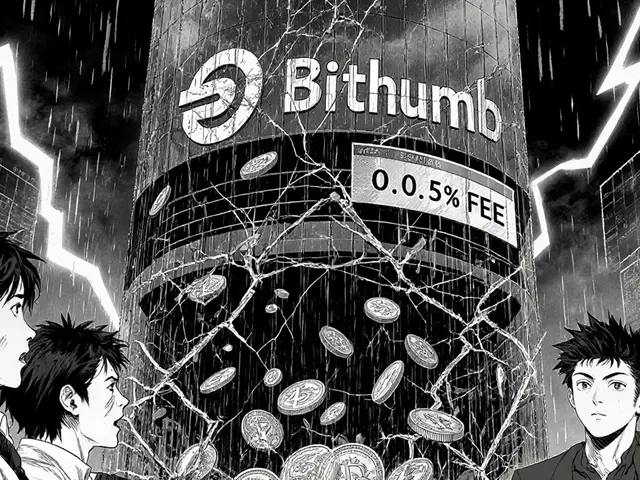P2P Insurance Savings Calculator
When you hear the term peer-to-peer insurance is a risk‑sharing model that lets groups of individuals pool premiums directly, often using blockchain to automate claims and fund distribution, you might wonder how it differs from the policies you buy from big insurers. The idea is simple: people with similar risk profiles form a community, each member contributes to a shared pot, and the pot pays out legitimate claims. What makes the model attractive today is the blend of digital platforms, smart contracts, and a desire for transparency that traditional insurers struggle to offer.
Key Takeaways
- Peer-to-peer insurance lets groups self‑organize, reducing overhead and often lowering premiums.
- Two main structures exist: the broker model (mixed with a reinsurer) and the insurance‑company model (flat‑fee service).
- Blockchain and smart contracts provide immutable records, instant payouts, and clear ownership of the pool.
- Market size hit US$63 billion in 2023 and is projected to grow >30% annually through 2027.
- Key players - Lemonade demonstrates a U.S. consumer‑focused approach, while Friendsurance shows a European model built around community trust.
What Is Peer-to-Peer Insurance?
The National Association of Insurance Commissioners (NAIC defines peer-to-peer insurance as a product that allows a group of insureds to pool their capital, self‑organize, and self‑administer their own insurance). In practice, members join a digital platform, set clear participation rules, and pay a fixed premium into a shared fund. If the pool can cover a claim, the payout is immediate; if not, a reinsurer steps in to fill the gap.
Unlike traditional insurers that spread risk across millions of unrelated policyholders, P2P groups keep risk exposure tight. This tighter grouping reduces moral hazard - members are less likely to file frivolous claims because they see the impact on their neighbors’ funds.
Core Structural Models
Two architectures dominate the space.
- Broker Model: A broker hosts the platform, collects premiums, and contracts with a third‑party insurer. Small claims are paid from the pool, large claims are passed to the insurer. The broker earns commissions, but the pool still saves on administrative fees.
- Insurance‑Company Model: An insurer runs the platform for a flat fee. The pool covers all claims up to its limit; once the pool is exhausted, the insurer (often via reinsurance) covers the remainder. This model mimics a conventional policy but preserves the community‑driven fund.
Both models rely on a reinsurer that provides a backup layer of risk in exchange for a share of the premium. The choice between models hinges on cost tolerance, desired coverage breadth, and how much control members want over claim decisions.
Blockchain, Smart Contracts, and Trust
Blockchain brings three crucial advantages.
- Immutability: Every premium payment and claim event is recorded in a tamper‑proof ledger, eliminating disputes over who paid what.
- Automation: smart contracts execute payouts automatically when predefined conditions are met, cutting processing time from days to minutes.
- Transparency: Members can view real‑time fund balances and audit claim histories without needing a middleman.
Platforms like Lemonade use Ethereum‑compatible chains to store policy data, while European startups experiment with permissioned ledgers to meet regulatory requirements. The result is a more accountable system where every stakeholder sees the same facts.

Market Landscape and Growth Drivers
In 2023 the global peer‑to‑peer insurance market was valued at US$63 billion-still under 1% of the US$7.2 trillion overall insurance industry. Yet the segment is booming, with analysts forecasting >30% CAGR through 2027. Growth is fueled by three trends:
- Consumer demand for lower premiums: Digital platforms shave off administrative overhead, passing savings to members.
- Desire for transparency: Users want to see exactly how their money is used; blockchain satisfies that.
- Sharing‑economy synergy: As services like Uber and Airbnb popularize peer‑to‑peer risk, insurance follows suit.
Microbusinesses, defined as firms with fewer than ten employees, are a sweet spot. Kyle Hoffman of Chubb notes that these firms are often under‑served by traditional brokers, yet their risk profiles are simple enough for P2P models to assess accurately.
Benefits for Members
Data from multiple pilots show lower expense ratios (the portion of premiums spent on administration) compared with legacy carriers. A typical P2P pool can achieve expense ratios of 15‑20% versus 30‑35% for a conventional insurer. The cost advantage translates into premium discounts of 5‑12% on average.
Beyond price, members gain:
- Community governance: Some platforms let members vote on claim approvals or fund allocation, fostering a sense of ownership.
- Faster claim resolution: Since the pool holds cash upfront and smart contracts automates payouts, approved claims settle within hours.
- Refund or rollover of surplus: Unused funds at policy end can be returned, reinvested, or donated, unlike traditional insurers that retain profits.
Challenges and Risks
Despite the upside, P2P insurance faces real hurdles.
- Regulatory uncertainty: Jurisdictions differ on how to classify a digital risk pool, and compliance costs can rise quickly.
- Scale of reinsurance: Small pools may deplete quickly after a few large events, requiring robust reinsurance contracts.
- Member onboarding: Achieving a critical mass of like‑risk participants is essential; otherwise, risk pooling loses its benefit.
Addressing these issues often means partnering with established insurers for licensing and capital support while retaining the tech‑first P2P experience.

Real‑World Examples
Lemonade launched its “Giveback” program, where any surplus at year‑end is donated to charitable causes chosen by policyholders. The company uses AI chatbots for underwriting and Ethereum‑based smart contracts for claim verification, delivering payouts in under three minutes for many loss‑of‑personal‑property claims.
Friendsurance operates a European P2P model focused on auto and household insurance. Members form groups of 10‑20 drivers, sharing a portion of premiums. If the group’s claim costs stay below a preset threshold, the remaining fund is returned to members.
Both firms illustrate how the community aspect, combined with modern tech, can attract price‑sensitive consumers while maintaining solvency through reinsurance partnerships.
Use Cases for Microbusinesses
Consider a graphic‑design studio with five freelancers. Traditional commercial liability insurance might cost $1,200 annually. In a P2P pool with other creative agencies, the same coverage could be $950 because the group shares a narrow risk profile (office‑based, low physical‑damage exposure). Premiums are paid into a smart‑contract‑governed pool, and any unused balance rolls forward to the next year, effectively rewarding low‑claim behavior.
Besides liability, P2P models are emerging for cyber‑risk, travel insurance for gig workers, and equipment breakdown coverage. The key is matching businesses with peers who face comparable exposures.
Future Outlook
As AI improves risk modeling and blockchain standards mature, we can expect tighter integration of underwriting, claims assessment, and fraud detection. Larger insurers are already launching white‑label P2P platforms to tap into niche markets without cannibalizing their core book of business.
Regulators are drafting sandbox frameworks that let innovators test P2P solutions under limited‑license conditions, accelerating adoption. If the current growth trajectory holds, peer‑to‑peer insurance could claim a noticeable share of the market by 2030, especially in regions that embrace digital‑first financial services.
peer-to-peer insurance is reshaping how risk is managed, offering lower costs, greater transparency, and a community feel that traditional policies lack.Frequently Asked Questions
How does a P2P insurance pool differ from a traditional mutual insurance company?
Both rely on members sharing risk, but a mutual insurer is a legally formed entity that retains premiums and pays claims itself. A P2P pool lives on a digital platform, often uses smart contracts, and returns surplus to members or charities instead of keeping it as profit.
Do I need a blockchain wallet to join a P2P insurance platform?
Not always. Some platforms abstract the blockchain layer and let you pay by credit card or bank transfer, while the backend handles token conversion. Wallets become optional only when you want to receive payouts in crypto.
What happens if my P2P pool runs out of money after a big loss?
The pool’s reinsurance contract kicks in. The reinsurer covers the excess in exchange for a pre‑agreed share of the premium. This safety net is built into the policy from the start.
Can I choose who is in my insurance pool?
Yes. Many platforms let you join existing groups based on geography, profession, or hobby, or you can create a private pool with friends and family. The more homogeneous the group, the better the pricing tends to be.
Is peer-to-peer insurance regulated?
Regulation varies by country. In the U.S., P2P platforms must be licensed as insurers or work with a licensed carrier. Europe’s Solvency II framework also applies to the reinsurers behind the pools.








Patrick Day
October 19, 2025 AT 08:36Everything they call "blockchain" is just big tech's way to watch our wallets, mark my words.
Scott McCalman
October 26, 2025 AT 04:36Listen up, folks – the P2P insurance model is basically a textbook case of democratizing risk, and the numbers prove it! 😎
We’re seeing expense ratios drop to 15‑20%, which is half of what legacy carriers charge.
That’s not hype, that’s hard data, and the speed of payouts thanks to smart contracts is a game‑changer.
Sure, there are regulatory hoops, but that’s a small price to pay for transparency and lower premiums.
Bottom line: the future is already here, and it’s peer‑to‑peer.
PRIYA KUMARI
November 2, 2025 AT 01:36The actuarial assumptions you quoted are nothing but wishful thinking. Your confidence in smart contracts ignores the fact that code is written by humans, and humans make mistakes. Every breach in a blockchain ledger immediately translates to a financial hole that your pool cannot magically fill. Moreover, the reinsurance models you describe are built on proprietary data that is rarely disclosed to participants. This lack of transparency defeats the very purpose of a community‑driven risk pool. The supposed “lower expense ratios” are calculated on a narrow set of pilot programs that do not scale. When you expand to a true market of micro‑businesses, administrative complexity skyrockets. You also ignore the regulatory labyrinth that varies not only by state but by country, forcing platforms to seek costly licenses. The “immutable record” argument sounds impressive until you consider that immutability can also lock in erroneous entries forever. In practice, a single buggy smart contract can freeze an entire pool’s assets for weeks. Your optimism about AI‑driven underwriting overlooks bias embedded in training data, leading to discriminatory pricing. The “community governance” claim is a myth when the majority of token holders are passive investors with no desire to vote. Additionally, the emphasis on speed sacrifices due diligence, increasing the likelihood of fraudulent claims slipping through. Finally, the reliance on crypto wallets excludes a large segment of your target demographic who lack technical expertise. In short, the hype around P2P insurance on blockchain is a thin veneer over unresolved operational and legal risks.
del allen
November 8, 2025 AT 22:36Heyyy, I totally get the excitement-these platforms feel like a big family, right? :)
Just a heads‑up tho, some of the older users still struggle with the tech, so a simple FAQ could go a long way.
Also, I’ve seen a couple of typo‑riddled policy docs that made me nervous, lol.
Hope the community keeps it friendly and helpful!
Thanks for sharing!!
Jessica Pence
November 15, 2025 AT 19:36Great rundown! A couple of practical points to add: first, when evaluating a P2P platform, check if they have a clear reinsurance back‑stop – that’s your safety net if the pool runs dry.
Second, look for transparent fee structures; some services hide admin costs in the premium.
Finally, verify the claim‑verification process – if it’s fully automated you still want an appeal mechanism for edge cases.
Hope this helps anyone deciding whether to jump in.
johnny garcia
November 22, 2025 AT 16:36From a philosophical standpoint, the emergence of peer‑to‑peer insurance epitomizes a shift from centralized epistemic authority toward a distributed ontology of risk.
In other words, we are moving from a monolithic epistemology of protection to a pluralistic, networked paradigm. 😊
This transition, while fraught with regulatory friction, underscores the dialectic between autonomy and collective responsibility.
One might argue that the blockchain merely serves as the substrate for this new social contract.
Thus, the future of risk management appears both inevitable and ethically compelling.
Prerna Sahrawat
November 29, 2025 AT 13:36Allow me to articulate, with the requisite gravitas, why the current discourse on decentralized risk mitigation is, at its core, a manifestation of the inevitable obsolescence of antiquated fiduciary structures.
The confluence of cryptographic verification, algorithmic underwriting, and communal capital allocation heralds an era wherein the erstwhile monopoly of insurers is supplanted by a consortium of digitally‑savvy participants.
Such a paradigm shift is not merely technological but sociocultural, redefining trust from an institution‑based construct to a ledger‑anchored certainty.
One must, however, remain vigilant to the vicissitudes of regulatory arbitrage, which, if left unchecked, could engender a disjointed mosaic of compliance.
Nevertheless, the trajectory is unmistakable: the democratization of insurance is not a speculative venture but an inexorable progression.
Anna Kammerer
December 6, 2025 AT 10:36Oh, look, another “revolutionary” platform that will totally solve everything… 🙄
Sure, the idea of low premiums sounds nice, but don’t forget the inevitable “oops” moment when the pool runs out and you’re left holding the bag.
At least they’re being transparent, right? Because nothing says trust like a smart contract you can’t read.
Anyway, good luck to anyone who actually signs up; I’ll be over here, sipping my coffee and watching the drama unfold.
Mike GLENN
December 13, 2025 AT 07:36Reading through this whole thing really made me think about how insurance fits into our everyday lives.
First, the community aspect of P2P models feels like a modern take on the old mutual societies that farmers used centuries ago.
Second, the speed of payouts via smart contracts could be a lifesaver for small businesses that can’t wait weeks for a check.
Third, the transparency promised by blockchain might actually restore a degree of trust that the big insurers have eroded.
But there are also real concerns: how do we ensure the code is bug‑free, and who watches the reinsurance agreements?
Moreover, if the pool depletes after a major event, members could face sudden gaps in coverage.
Regulatory compliance is another hurdle – we’ll need clear guidelines to protect consumers without stifling innovation.
From a user perspective, onboarding must be simple; many people aren’t comfortable with crypto wallets.
Education will be key – people need to understand how risk is shared and what their responsibilities are.
The potential for lower expense ratios is exciting, yet we must verify those numbers across diverse markets.
In terms of technology, integrating AI for underwriting could improve accuracy but also introduces bias if not handled carefully.
The idea of surplus rollovers is appealing – it incentivizes low‑claim behavior and aligns interests.
Overall, the concept feels promising, but real‑world implementation will determine whether it lives up to the hype.
We should keep an eye on pilot programs and gather data before jumping in wholeheartedly.
BRIAN NDUNG'U
December 20, 2025 AT 04:36Friends, let us embrace this brave new frontier with the vigor of ancient pioneers, for the promise of peer‑to‑peer insurance heralds a democratization of risk that aligns with the highest ideals of solidarity and mutual aid.
May we proceed with diligence, transparency, and an unwavering commitment to the common good!